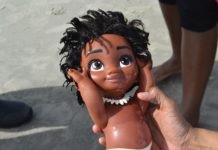I am not altogether sold on the idea of school. I was before my daughter was born however like so many other aspects of my life, my world view completely shifted with her arrival. My own schooling was entirely conventional: kindergarten, primary, secondary school followed by university and post graduate osteopathy college. In my usual manner, during my pregnancy I had already identified a kindergarten and primary school that I wanted her to attend and then after she arrived something strange happened; I wasn’t sure I wanted her to go to school anymore.
I cannot explain how it happened (though I know she had more than a small hand in it) but I suddenly felt that conventional schooling wasn’t exactly right for the global citizen I was hoping to raise. Even though the schools I had chosen were creative in their curriculum and modes of teaching, they still followed (especially after the age of six) the basic principal of a group of students “learning” from a teacher prescribing things at prescribed times. (In Kenya, it is common for children to start kindergarten as young as 18 months and are expected to write their names by the time they start primary school at six).
I was spending lots of time with this baby growing into a toddler and this was not how it seemed to me that children learned. They appeared to be much more experimental, daring and inquisitive than schools expected (or indeed could cope with). Even now (aged three and eight months though it started about nine months ago) as she teaches herself the alphabet she seems to have a lot more fun with it than I ever did.
Just this afternoon, I watched as she traced the letters VENUS on a fridge door. She is as yet unable to pronounce the word without help but she squealed with delight as she identified each letter correctly in sequence. The first letter she learnt was S. I have no idea why S but somewhere just before her third birthday she asked me about it and we spent a few months exploring it. S on car number plates, STOP signs, buses. S was much more pervasive in the universe that I had realized. S was everywhere.
All was quiet for a few days after she got confident with S, and then it was the letter E. Her nanny’s name begins with E so this was a delightful discovery. And so it went on. As I increasingly grapple with the idea of her education, I decided to gather some tools and so have trained as a Montessori Early Years teacher and am a little more than half way through my Waldorf Primary School Training. I do hope that I can keep up with her and am noticing how pleasurable it is to learn alongside her. One of her favourite subjects is art. She loves to draw and paint and her ability is clearly greater than mine, however this is no deterrent as I am to be a facilitator rather than prescriber in her education.
So we are learning to draw together. As she is so young, most sessions are free flow but at least once a day we sit down with a classic German book that teaches one how to master form. We start by copying lines, circles and shapes liberated by our mutual lack of understanding of the German language instructions accompanying the sketches.
These times become almost meditative and since we started she decided to see what happens if she joined these shapes. I cannot describe her joy to realize they become letters that she recognizes. Bumps become N’s and M’s and circles and lines join to form B’s P’s and D’s. Quite unexpectedly my own sketches are becoming recognizable (though my writing is yet to follow suit). Our drawing sessions came to life because of getting the best from the following cultures: the Lusona form drawings of the Chokwe from Angola/Zambia, the German Drawing book, Rudolf Steiner’s teachings, Montessori’s Italian Culture and Mona Brook’s American text, Drawing with Children. A multicultural mix of paints on the artist’s palette.


































